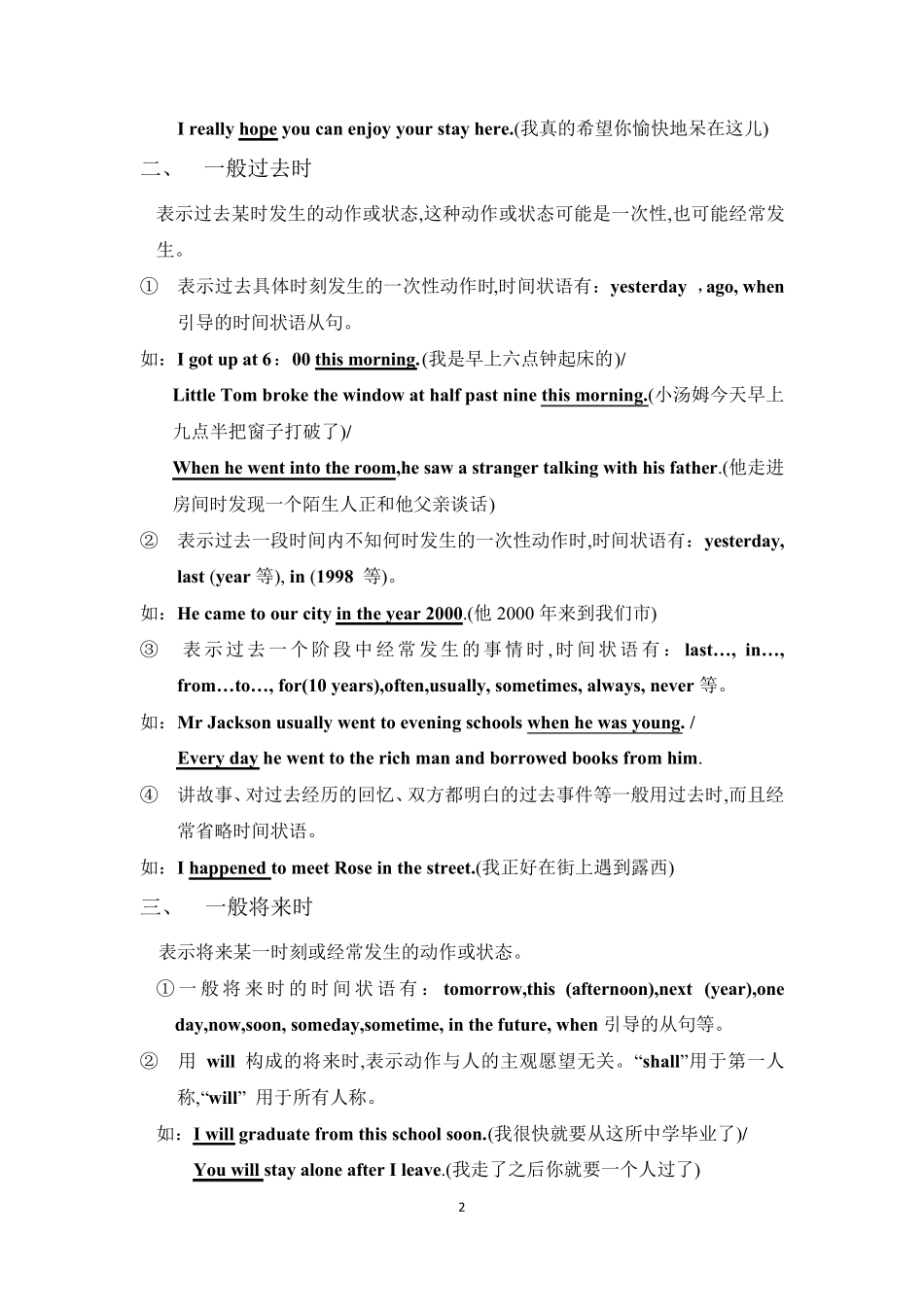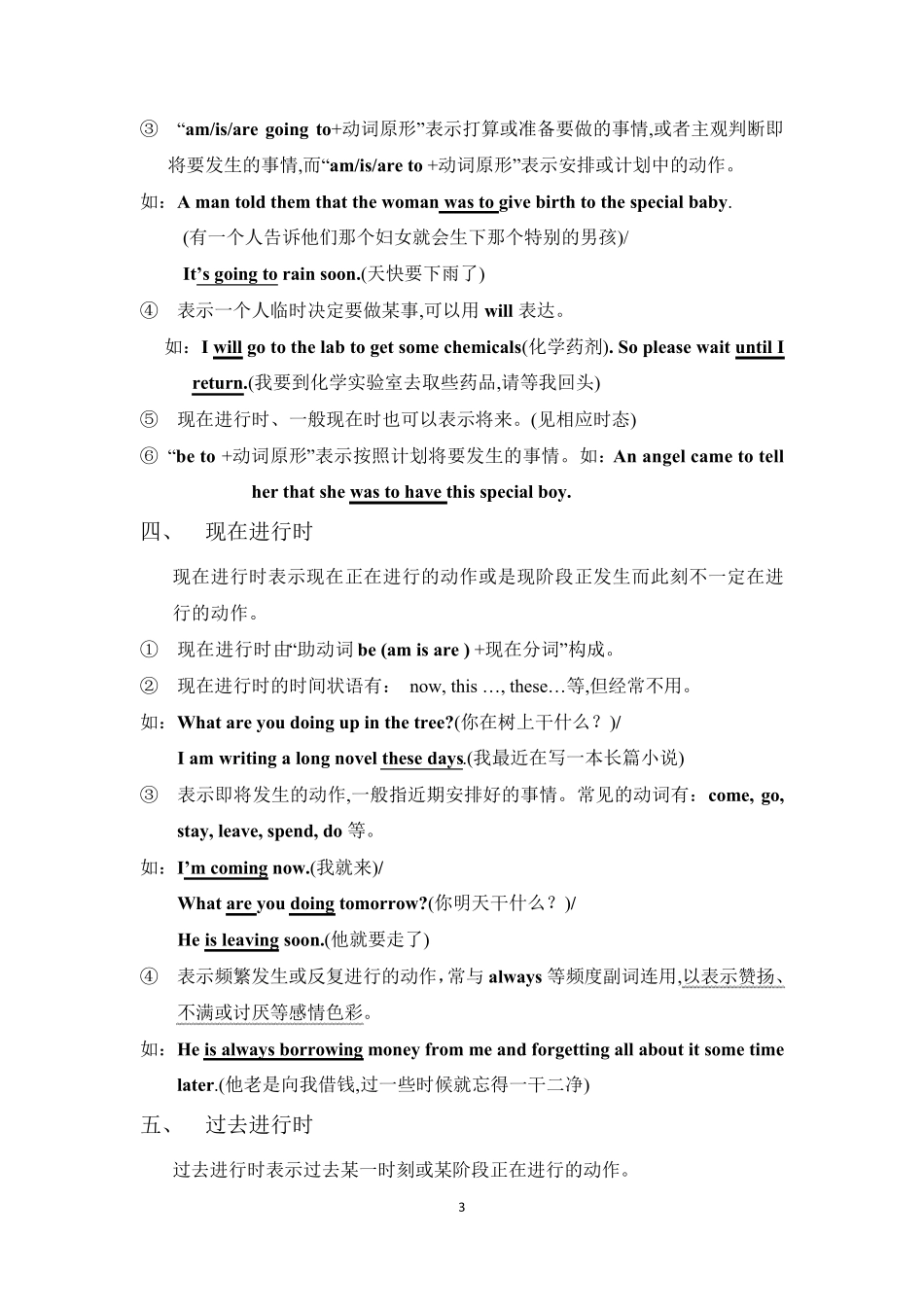1 九种时态的具体用法: 一、 一般现在时 表示现阶段经常或习惯发生的动作或存在的状态,或说明主语的特征。 ① 一般现在时句子中常有的时状: often , usually , sometimes, always, every (day等), once/twice a (week 等), on (Sunday等), never, in the (morning 等)。 如:They go to the Palace Museum once a year.(他们每年去一次故宫)/ They often discuss business in the evening.(他们经常在晚上商谈生意) ② 表示客观真理、事实、人的技能或现在的状态时句子里一般不用时间状语。如:The earth turns round the sun.(地球绕着太阳转)/ Light travels faster than sound.(光传播比声音快) ③ 表示十分确定会发生(如安排好的事情)或按照时间表进行的事情,用一般现在可以表达将来,句子中可以有将来时间。 如:The train for Haikou leaves at 8:00 in the morning. (开往汉口的列车上午 8 点开车) ④ 在时间状语从句中(以 when, after, before, while, until, as soon as 等引导)和条件状语从句中(以 if,unless 引导),用一般现在时代替一般将来时,句子可以有将来时间。 如:Please ring me up as soon as you arrive in Germany.(你一到德国就给我打电话) / If it rains tomorrow,we will have to stay at home.(如果明天下雨我们就只好呆在家) ⑤ 一般现在时用于倒装句中可以表示正在发生的动作,动词以 come, go 为主。如:Here comes the bus. (车来了) / There goes the bell.(铃响了)。 ⑥ 一般现在时常用于体育比赛的解说或寓言故事中。 Now the midfield player catches the ball and he keeps it. ⑦ 人的心理活动和感官动作一般用一般现在时而不用现在进行时表达,常见 动词有:like, love, hate, dislike, want, wish, hope, think(认 为),understand, remember, forget, mean, need, hear, feel, see. 如:I think it is going to snow.(我想 天要 下雪 了)/ 2 I really hope you can enjoy your stay here.(我真的希望你愉快地呆在这儿) 二、 一般过去时 表示过去某时发生的动作或状态,这种动作或状态可能是一次性,也可能经常发生。 ① 表示过去具体时刻发生的一次性动作时,时间状语有: yesterday ,ago, when引导的时间状语从句。 ...


